
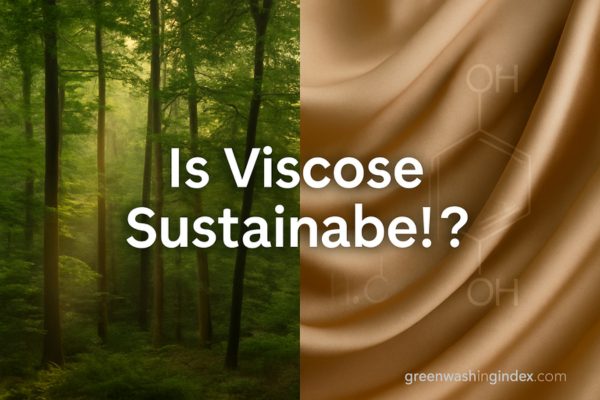
You’re standing in your favorite clothing store, holding a silky-soft dress labeled “eco-friendly viscose.” But here’s the uncomfortable truth: that “plant-based” tag might be hiding a darker environmental story.
Conventional viscose is NOT sustainable. Despite its natural origins, the chemical-intensive production process, massive deforestation, and toxic pollution make most viscose harmful to our planet. In fact, only 30% of global viscose production meets basic sustainability standards.
However, there’s hope. Innovative alternatives like ECOVERO and TENCEL Lyocell are revolutionizing how we make this versatile fabric. The key is knowing how to spot the difference between greenwashed claims and genuine sustainability.
This guide reveals the shocking environmental impact of viscose, debunks the microplastics myth, exposes production secrets, and shows you exactly how to identify truly sustainable options. Let’s uncover what the fashion industry doesn’t want you to know about viscose sustainability.
Viscose fabric, also known as rayon, is a semi-synthetic material made from dissolved wood pulp. Unlike fully synthetic fabrics, it starts with natural cellulose from trees like eucalyptus, beech, and pine. Through chemical processing, this wood becomes the soft, breathable material we find in everything from summer dresses to bed sheets.
The appeal is obvious: viscose feels like silk but costs a fraction of the price. It drapes beautifully, absorbs moisture well, and takes dye easily. These qualities have made it a fashion industry favorite for over a century.
But here’s where things get complicated. That transformation from tree to textile involves a cocktail of harsh chemicals, including carbon disulfide and sodium hydroxide. This process is why many question: is viscose environmentally friendly, or just another example of greenwashing in the fashion industry?
Viscose dominates the man-made cellulosic fiber market with an impressive 80% share, according to Textile Exchange. This massive market presence isn’t accidental. Manufacturers love viscose because it’s cheaper to produce than natural silk and more versatile than cotton.
Fashion brands particularly favor viscose for its ability to mimic luxury fabrics. A viscose blouse can look and feel premium while maintaining profit margins. This economic advantage has driven rapid industry expansion, but at what environmental cost?
The real question isn’t just about market dominance. It’s about whether this widespread use of viscose sustainable practices is helping or harming our planet’s future.
The viscose industry is experiencing explosive growth, expanding from $27.37 billion in 2025 to a projected $40.26 billion by 2032. This 8.4% annual growth rate reflects increasing demand for “sustainable” alternatives to synthetic fabrics.
But this growth comes with a dark irony. As more consumers seek eco-friendly options, the viscose industry expands production using mostly unsustainable methods. Without significant changes in manufacturing processes, this growth could accelerate environmental damage rather than reduce it.
The challenge is clear: can the industry transform its practices fast enough to justify this expansion? Or will increasing demand for viscose fabric only multiply existing environmental problems?
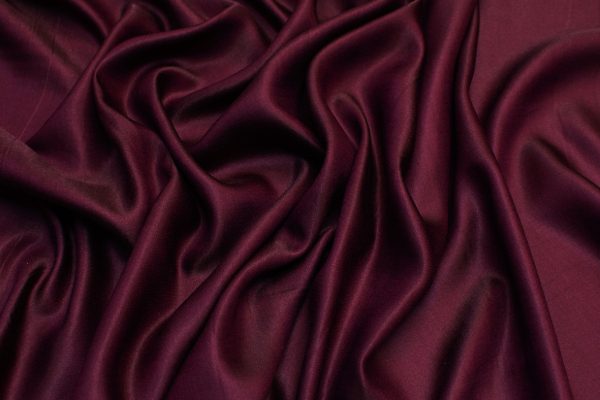
Here’s a statistic that should make every conscious consumer pause: less than 30% of global viscose production comes from sustainably managed forests. This means the vast majority of viscose in your wardrobe likely contributed to deforestation and habitat destruction.
The impacts of viscose on forest ecosystems are devastating. Ancient and endangered forests in Indonesia, Canada, and the Amazon are being cleared for pulpwood plantations. These aren’t just trees – they’re entire ecosystems supporting indigenous communities and endangered species.
What makes this particularly frustrating is that sustainable sourcing is entirely possible. Certified suppliers exist, but most brands choose cheaper, uncertified sources to maximize profits.
The environmental cost of viscose production is staggering. Manufacturing just one ton of viscose fabric requires approximately 30 tons of water and releases around 15 tons of harmful emissions into the environment.
These aren’t just numbers on a page. That contaminated water often flows directly into rivers and streams, poisoning aquatic life and local water supplies. Communities near viscose factories report higher rates of illness and environmental degradation.
The air pollution is equally concerning. Carbon disulfide emissions from viscose plants have been linked to serious health issues in workers and nearby residents. This is why understanding viscose fabric dangers is crucial for making informed choices.
Every year, the fashion industry cuts down 200 million trees for viscose and rayon production. If these trees were placed end to end, they would circle Earth seven times. This massive deforestation contributes significantly to climate change and biodiversity loss.
Canopy, a forest conservation organization, estimates that 30% of viscose comes from ancient and endangered forests. These irreplaceable ecosystems took centuries to develop and minutes to destroy.
The tragedy is that we have alternatives. Sustainable forestry practices and alternative fiber sources could dramatically reduce this environmental toll. But change requires consumer awareness and industry accountability.
The chemical process that transforms wood pulp into silky viscose involves a toxic mix of substances. Carbon disulfide, sodium hydroxide, and sulfuric acid are just the beginning. These chemicals don’t just vanish after production – they persist in the environment and human bodies.
Workers in viscose factories face severe health risks. Studies have linked carbon disulfide exposure to coronary heart disease, nerve damage, psychiatric disorders, and birth defects. The Changing Markets Foundation documented these health impacts in factories across Asia.
Even consumers aren’t entirely safe. While most chemicals are washed out during production, trace amounts can remain in finished garments. This is why understanding why is viscose bad goes beyond environmental concerns to human health issues.
Perhaps the most disappointing truth is that 75% of the world’s leading fashion brands have made little to no commitment to sourcing sustainable viscose. Despite growing consumer demand for ethical fashion, most companies prioritize profits over planet.
This lack of accountability perpetuates the cycle of environmental destruction. Without brand commitments to sustainable sourcing, manufacturers have no incentive to improve their practices.
The good news? The 25% of brands that have made commitments are proving that change is possible. Companies sourcing certified sustainable viscose show that fashion doesn’t have to cost the Earth.
Let’s settle this once and for all: No, viscose does not contain or release microplastics. Unlike synthetic fabrics such as polyester or nylon, viscose fabric microplastics are not a concern because viscose is made from plant-based cellulose, not petroleum-based plastics.
This is one area where viscose actually outperforms many synthetic alternatives. When you wash viscose clothing, it doesn’t shed tiny plastic particles that pollute waterways and enter the food chain. Instead, any fibers that do wash off are biodegradable cellulose.
However, this doesn’t give viscose a free pass on sustainability. While the question “does viscose release microplastics” has a reassuring answer, the chemical pollution from production remains a serious environmental concern. Think of it this way: viscose won’t contribute to the microplastic crisis, but it has its own set of environmental challenges.
Understanding the fundamental difference between viscose and synthetic fabrics helps clarify the microplastics issue. Synthetic fabrics like polyester are essentially plastic in fiber form, derived from petroleum. These materials never fully break down in nature.
Viscose, despite its chemical processing, maintains its plant-based structure. The cellulose molecules that form viscose fibers are the same basic building blocks found in cotton, linen, and other natural fibers. This molecular similarity is why viscose biodegradable properties exist.
The key distinction: while synthetics fragment into smaller and smaller pieces of plastic (microplastics), viscose fibers decompose back into natural elements. This fundamental difference makes answering “is viscose a microplastic” straightforward – it simply isn’t plastic at all.
Pure viscose fabric typically biodegrades within 6 weeks to 1 year under proper composting conditions. This relatively quick decomposition happens because soil microorganisms recognize and can digest the cellulose structure. Compare this to polyester, which can persist in the environment for 200+ years.
However, there’s an important caveat. Many viscose garments are blended with synthetic fibers like elastane or polyester for stretch and durability. These blended fabrics won’t fully biodegrade, leaving synthetic components behind.
The decomposition rate also depends on environmental conditions. In a landfill with limited oxygen, even biodegradable viscose breaks down much more slowly. This is why asking “does viscose biodegrade” requires a nuanced answer based on fabric composition and disposal method.
While viscose doesn’t contribute to microplastic pollution, it’s not without environmental concerns during disposal. The chemicals used in production can leave residues in the fabric that may leach out during decomposition.
These chemical residues are different from microplastics but can still impact soil and water quality. Dyes, finishing treatments, and trace production chemicals don’t always break down harmlessly. This is why the impact environmental viscose has extends beyond just the manufacturing phase.
The silver lining? Unlike microplastics that accumulate forever, these chemical residues typically break down over time. Choosing viscose from manufacturers using closed-loop systems and eco-friendly dyes minimizes these end-of-life impacts.
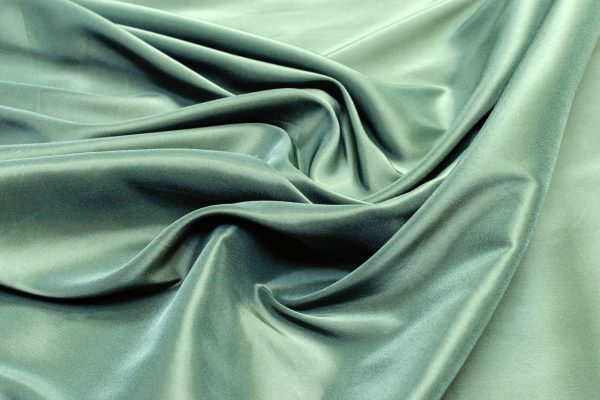
The viscose journey begins in forests worldwide, where trees are harvested for their cellulose-rich wood. Fast-growing species like eucalyptus, pine, and beech are preferred, but the sourcing often extends to ancient and endangered forests.
The deforestation problem isn’t just about cutting trees. Clear-cutting for viscose plantations destroys entire ecosystems, displaces indigenous communities, and releases stored carbon into the atmosphere. A single viscose factory can consume thousands of acres of forest annually.
Sustainable sourcing exists but remains the exception. Forest Stewardship Council certification ensures responsible forest management, but most viscose producers opt for cheaper, uncertified sources. This is where the question “is viscose eco friendly” first encounters its biggest challenge.
Once harvested, wood chips are cooked in chemical solutions to extract pure cellulose. This pulp then undergoes the viscose process – a chemical transformation that turns solid cellulose into a honey-like liquid.
The chemical bath includes:
This toxic cocktail is why viscose fabric dangers extend far beyond the finished product. Workers handling these chemicals face serious health risks, while improper disposal contaminates soil and water for generations.
The viscous cellulose solution is forced through tiny holes (spinnerets) into an acid bath, where it solidifies into fibers. These fibers are then washed, bleached, and dried – each step consuming massive amounts of water.
A typical viscose factory uses millions of gallons of water daily. Without proper treatment, this wastewater carries chemicals, dyes, and cellulose waste into local water systems. Communities downstream from viscose plants often cannot use rivers for fishing or drinking water.
The finishing process adds another layer of environmental impact. Dyes, softeners, and other treatments introduce additional chemicals that may not fully wash out. This is why sustainable viscose production must address every stage, not just fiber creation.
The key to sustainable viscose lies in the production system. Traditional open-loop systems discharge chemicals and wastewater into the environment after a single use. This wasteful approach is why conventional viscose sustainability remains questionable.
Closed-loop systems revolutionize this process by capturing and reusing chemicals. Leading sustainable viscose producers recover up to 99.5% of solvents, dramatically reducing environmental impact. Water is treated and recycled, minimizing both consumption and pollution.
Comparison of Production Systems:
| Feature | Open-Loop (Conventional) | Closed-Loop (Sustainable) |
|---|---|---|
| Chemical Recovery | <50% | >99% |
| Water Usage | High | 50% less |
| Emissions | Significant | Minimal |
| Cost | Lower | Higher |
| Certifications | Rare | Common (EU Ecolabel, etc.) |
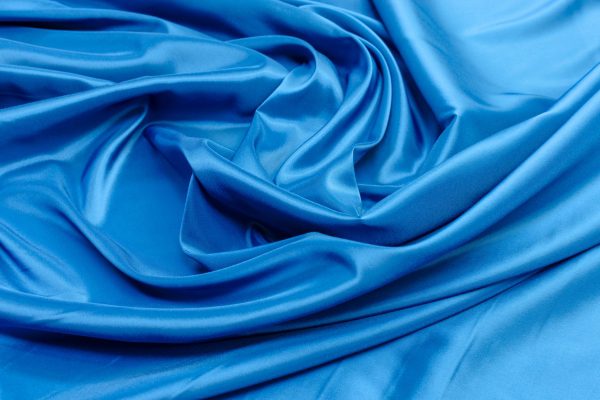
The sustainability comparison between viscose and cotton isn’t straightforward. Conventional cotton cultivation uses approximately 20,000 liters of water per kilogram of fabric, while viscose production uses less water overall but concentrates it in the manufacturing phase.
Cotton’s environmental impact comes primarily from farming: pesticides, fertilizers, and irrigation. Organic cotton eliminates pesticide concerns but still requires substantial water. Viscose shifts the environmental burden from agriculture to industrial processing.
Chemical processing tells a different story. Cotton requires fewer harsh chemicals during manufacturing, while viscose’s transformation involves the toxic substances we’ve discussed. However, cotton farming chemicals persist in soil and groundwater for years, while properly managed viscose chemicals can be contained and recycled.
Comparing viscose to polyester highlights a classic environmental trade-off. Polyester production uses less water and fewer chemicals than viscose, but it’s derived from petroleum and never biodegrades.
The microplastics issue clearly favors viscose. While asking “does viscose have microplastics” yields a negative answer, polyester sheds millions of plastic particles with every wash. These microplastics contaminate oceans, enter the food chain, and accumulate in our bodies.
Energy consumption presents another contrast. Polyester production requires high temperatures and fossil fuels, contributing significantly to carbon emissions. Viscose production uses less energy but generates chemical pollution. Neither is perfect, but viscose’s biodegradability gives it an end-of-life advantage.
TENCEL and Modal represent the evolution of viscose technology. All three start with wood pulp, but their processing methods and environmental impacts differ dramatically.
Sustainability Comparison Table:
| Aspect | Conventional Viscose | Modal | TENCEL Lyocell |
|---|---|---|---|
| Forest Source | Often uncertified | Mixed certification | FSC/PEFC certified |
| Chemical Use | High, toxic | Moderate | Low, non-toxic |
| Water Usage | Very high | High | 50% less |
| Production System | Open-loop | Semi-closed | Closed-loop |
| Biodegradability | Yes | Yes | Yes |
| Cost | Low | Medium | Higher |
TENCEL’s closed-loop system and non-toxic solvents make it the clear sustainability winner. Modal falls somewhere between, offering better performance than conventional viscose but lacking TENCEL’s environmental credentials.
Finding truly sustainable alternatives to conventional viscose is easier than ever. These innovative fabrics prove that we don’t have to sacrifice quality or performance for environmental responsibility.
Certifications cut through greenwashing to reveal genuine sustainability. The Forest Stewardship Council (FSC) and Programme for Endorsement of Forest Certification (PEFC) ensure responsible forest management from source to store.
Look for these key certifications:
Multiple certifications indicate stronger sustainability commitments. Be skeptical of brands claiming “eco-friendly viscose” without third-party verification.
Greenwashing runs rampant in viscose marketing. Watch for these warning signs that indicate misleading sustainability claims.
Vague terms like “natural,” “plant-based,” or “eco” mean nothing without specifics. All viscose comes from plants – that doesn’t make it sustainable. Brands serious about sustainability provide detailed information about their supply chain and certifications.
Beware of partial truths. Claims like “made from sustainable forests” might only apply to a small percentage of their viscose. Ask for percentages and proof. True sustainable viscose producers eagerly share their environmental data.
Armed with the right questions, you can separate genuine sustainability from greenwashing. Don’t hesitate to contact brands directly – their responses (or lack thereof) reveal their true commitments.
Essential questions to ask:
Transparent brands welcome these questions and provide specific answers. Those offering vague responses or refusing to share information likely have something to hide.
Understanding label terminology helps identify more sustainable options. Not all viscose is created equal, and names can indicate production methods.
Common label terms and their meanings:
Check fiber content percentages too. A “sustainable viscose blend” might contain only 10% certified fibers mixed with conventional materials.
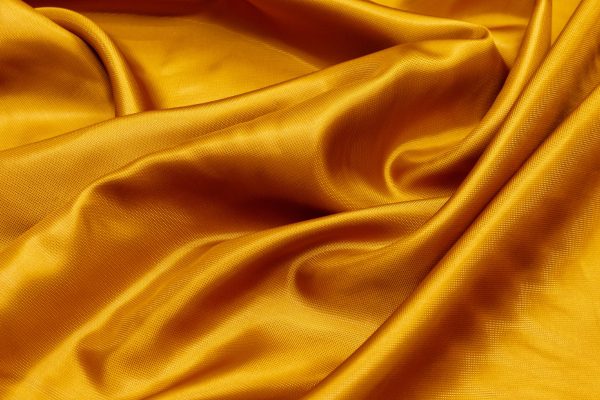
Despite the technology existing, only 0.5% of man-made cellulosic fibers incorporate recycled materials. This shocking statistic reveals a massive missed opportunity in creating truly circular fashion.
The barriers aren’t technical – they’re economic. Virgin wood pulp remains cheaper than collecting and processing textile waste. Without regulations or consumer pressure, manufacturers lack incentive to invest in recycling infrastructure.
However, change is accelerating. Innovators like Infinited Fiber and Renewcell are scaling up production of recycled viscose. As these technologies mature and costs decrease, recycled content should become standard rather than exception.
Canopy’s annual Hot Button Report has become the industry benchmark for viscose sustainability. In their latest assessment, they’ve tracked 97.5% of global MMCF production, creating unprecedented transparency.
The report reveals encouraging progress: leading producers are eliminating ancient forest fibers and adopting cleaner technologies. However, it also exposes laggards clinging to destructive practices. This transparency empowers consumers and brands to make informed choices.
Key findings show that top-performing producers have achieved “green shirt” status by implementing closed-loop systems and sustainable sourcing. These leaders prove that producing viscose environmentally friendly is not only possible but profitable.
The future of sustainable viscose lies in revolutionary technologies that eliminate traditional production problems. Ionic liquid solvents replace toxic chemicals, while enzymatic processing reduces energy consumption.
Exciting developments include:
These innovations suggest that viscose could transform from environmental villain to sustainability hero. The key is scaling these solutions before the projected industry growth causes irreversible damage.
Shopping for genuinely sustainable viscose requires vigilance. Even well-intentioned consumers fall into these common traps that undermine their environmental goals.
Assuming all plant-based equals eco-friendly: Just because viscose comes from trees doesn’t make it green. The transformation process matters more than the origin. Conventional viscose’s environmental impact often exceeds that of some synthetics.
Ignoring certification labels: Certifications aren’t perfect, but they’re our best tool for verification. Skipping this step means potentially supporting deforestation and chemical pollution. Always verify claims through third-party certifications.
Falling for greenwashing tactics: Beautiful nature imagery and green packaging don’t equal sustainability. Greenwashing in fashion is sophisticated – look beyond marketing to actual practices.
Not considering the full lifecycle: Focusing only on biodegradability ignores production impacts. A biodegradable fabric that poisoned waterways during manufacturing isn’t truly sustainable.
Overlooking worker welfare issues: Environmental sustainability must include social responsibility. The cheapest viscose often comes from factories with poor safety records and worker exploitation.
Maximizing the sustainability of viscose goes beyond the initial purchase. How you care for and dispose of these garments significantly impacts their environmental footprint.
Care instructions to extend garment life:
When viscose is the better choice: Despite its issues, viscose sometimes represents the more sustainable option. Choose quality viscose over disposable fast fashion synthetics. For special occasion wear that’s rarely washed, viscose’s lack of microplastic shedding makes it preferable to polyester.
Supporting brands doing it right: Vote with your wallet by supporting sustainable fashion brands using certified viscose. Share their stories on social media. Customer advocacy drives industry change faster than regulations.
Advocating for transparency: Contact your favorite brands asking about their viscose sourcing. Even if they don’t respond immediately, customer inquiries create internal pressure for improvement. Join campaigns by organizations like Canopy pushing for industry-wide change.
Yes, pure viscose is biodegradable and typically decomposes within 6 weeks to 1 year under proper composting conditions. However, this biodegradability comes with important caveats.
Blended fabrics containing viscose and synthetic fibers won’t fully biodegrade. The synthetic components remain in the environment indefinitely. Additionally, chemical treatments and dyes can slow decomposition and potentially release harmful substances.
For optimal biodegradability, choose 100% viscose garments with natural dyes and minimal chemical finishing. Even better, opt for certified sustainable viscose to ensure the entire lifecycle minimizes environmental harm.
No, viscose does not release microplastics during washing. As a cellulose-based fiber, any particles that wash off are biodegradable plant matter, not plastic. This is one clear advantage viscose has over synthetic fabrics.
However, viscose can release dyes and chemical residues during washing. Using cold water and eco-friendly detergents minimizes this impact. Also, check if your viscose garments are blended with synthetics, which would shed microplastics.
The absence of microplastic pollution makes viscose a better choice than synthetics for frequently washed items. Just ensure you’re choosing sustainably produced viscose to avoid trading one environmental problem for another.
Bamboo viscose isn’t automatically more sustainable than regular viscose, despite marketing claims. While bamboo grows quickly without pesticides, the chemical processing typically remains the same as conventional viscose.
Most “bamboo” fabric undergoes the same toxic chemical bath as regular viscose. The sustainability advantage of bamboo cultivation gets negated by conventional processing. Only bamboo processed using lyocell technology offers genuine environmental benefits.
Look for bamboo lyocell or mechanically processed bamboo for truly sustainable options. Otherwise, bamboo viscose carries similar environmental concerns as regular viscose, just with better marketing.
Technically yes, viscose can be recycled, but practical recycling remains extremely limited. Current textile recycling infrastructure rarely handles viscose separately, and chemical recycling technologies are still scaling up.
Mechanical recycling of viscose is challenging because the fibers weaken when reprocessed. Chemical recycling shows more promise, breaking down viscose to regenerate new fibers. Companies like Infinited Fiber Company are pioneering these technologies.
The best approach currently is buying quality viscose garments that last longer and supporting brands using recycled content in their viscose production. As recycling technology improves, viscose recycling should become more accessible.
Leading brands committed to sustainable viscose include Eileen Fisher, Reformation, and Stella McCartney. These companies publicly share their viscose sourcing policies and use certified suppliers.
Many mainstream brands are improving too. H&M’s Conscious Collection uses TENCEL and ECOVERO. Zara has committed to using 100% sustainable viscose by 2025. However, verify these claims through certifications rather than taking marketing at face value.
The best approach is researching individual products rather than assuming entire brands are sustainable. Look for specific certifications on garments and check brand websites for detailed sustainability reports mentioning viscose sourcing.
The truth about viscose sustainability is complex but clear: conventional viscose is not sustainable. With only 30% sustainably sourced, massive water consumption, toxic chemical use, and widespread deforestation, standard viscose production harms our planet at every stage.
But here’s what matters: you now have the knowledge to make better choices. Viscose doesn’t release microplastics, and when produced responsibly using closed-loop systems and certified forests, it can be part of a sustainable wardrobe. Alternatives like ECOVERO and TENCEL prove that we don’t have to sacrifice quality for environmental responsibility.
Your purchasing decisions drive industry change. By checking certifications, asking brands tough questions, and supporting companies using sustainable viscose, you vote for a cleaner fashion future. Every certified garment purchased sends a message that consumers demand transparency and environmental accountability.
The viscose industry stands at a crossroads. With production projected to reach $40 billion by 2032, our choices today determine whether this growth destroys more forests or funds sustainable innovation. Choose wisely, and remember: true sustainability goes beyond biodegradability to encompass the entire production process. Together, we can transform viscose from an environmental problem into a sustainable solution.
